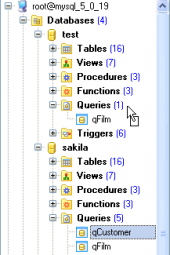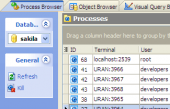SQL Maestro for MySQL online help
| Prev | Return to chapter overview | Next |
Customizing common options
On the wizard step you can set the number of records to import, whether the tool import all table records or only the specified number. In the second case you can set the number of records to skip.
Logging
This options group let you to manage logging of the import process.
Scripts
There are many cases where the import process is necessary to correct with additional scripts. So to disable table indexes before the importing, specify the corresponding scripts to be executed before and after the process.
The typical example of usage of the Before each table and After each table scripts is the import data to autoincrement columns of several tables. In this case it's neseccary to set the corresponding scripts:
SET IDENTITY_INSERT %table_name% ON
and
SET IDENTITY_INSERT %table_name% OFF
to be executed before and after import data to each table correspondingly.
Import mode
If the Update existing records option is turned ON, the records will be either updated or inserted: an UPDATE will be performed when a target row exists in the table and an INSERT is performed when the target row does not exist.
LOAD DATA INFILE command
Import Data Wizard supports this command to insert data to the table. This feature can speed up the import process up to 10 times so it is recommended to use it always if possible. Uncheck this option to use INSERT statements instead.
| Prev | Return to chapter overview | Next |





 Download
Download Buy
Buy
